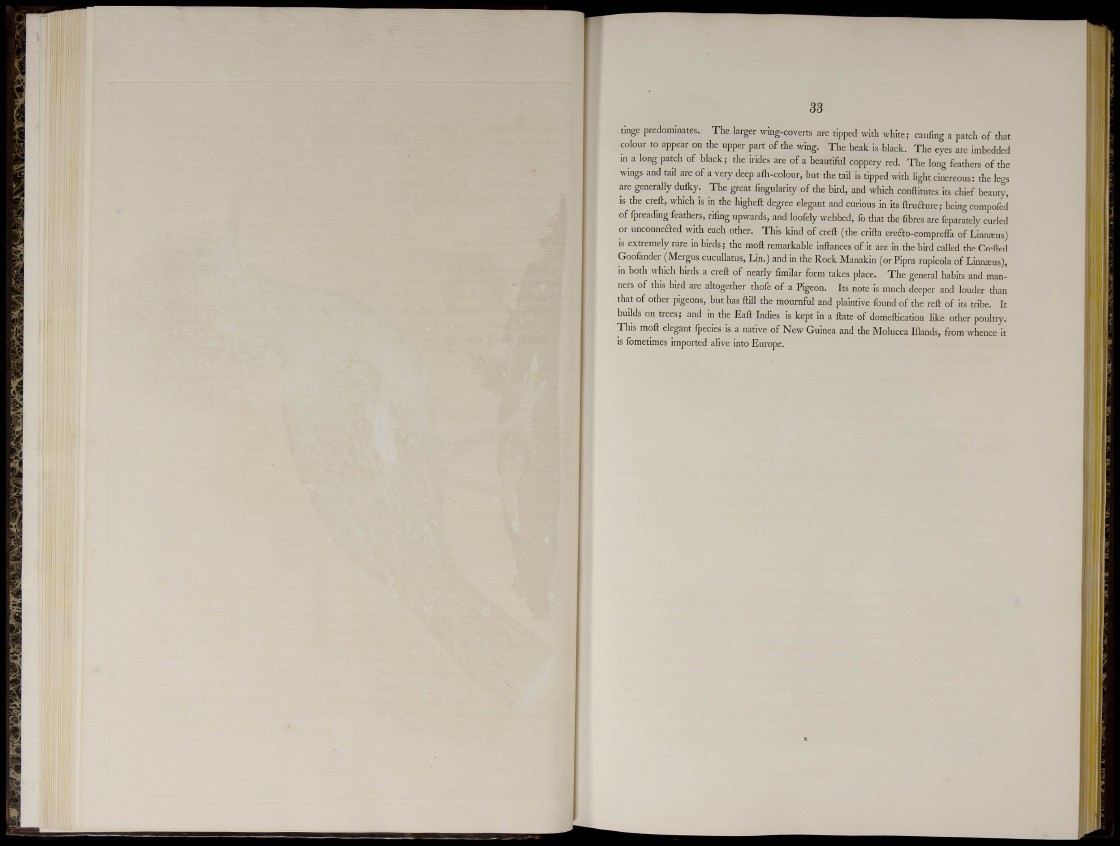
tinge predominates. T h e larger wIng-coverts are tipped with white; caufing a patch of that
colour to appear on the upper part of the wing. T h e beak Is black. T h e eyes are imbedded
in a long patch of bl a ck; the irides are of a beautiful coppery red. T h e long feathers of the
wmgs and ta.l are of a very deep afli-colour, but the tail is tipped with light cinereous: the Ic^s
are generally duiky. T h e great fmgularity of the bird, and which conftitntes its chief b e a u ^
is the creft, which is in the highell degree elegant and curious in its ftrufture; being compofed
of fpreadmg feathers, rifmg upwards, and loofely webbed, fo that the fibres are feparately curled
or unconnefted with each other. Thi s kind of creft (die crifta erefto-compreffa of Linnaus )
is extremely rare in birds; the moft remarkable inftances of It are in the bird called the Crefted
Goofander (Me rgus cucullatus, Lin. ) and in the Ro ck Manakin (or Pipra rupicola of Linnaus ) ,
in both which birds a creft of nearly fimilar form takes place. T h e general habits and manners
of this bird are altogether thofe of a Pigeon. Its note is much deeper and louder dian
that of other pigeons, but has ftill the mournful and plaintive found of the reft of its tribe. It
builds on trees; and in the Ea f t Indies is kept in a ftate of domeftication like other poultry.
Thi s moft elegant fpecics is a native of New Guinea and the Molucca Iflands, from whence it
is ibmetimes imported alive into Europe. I| ill